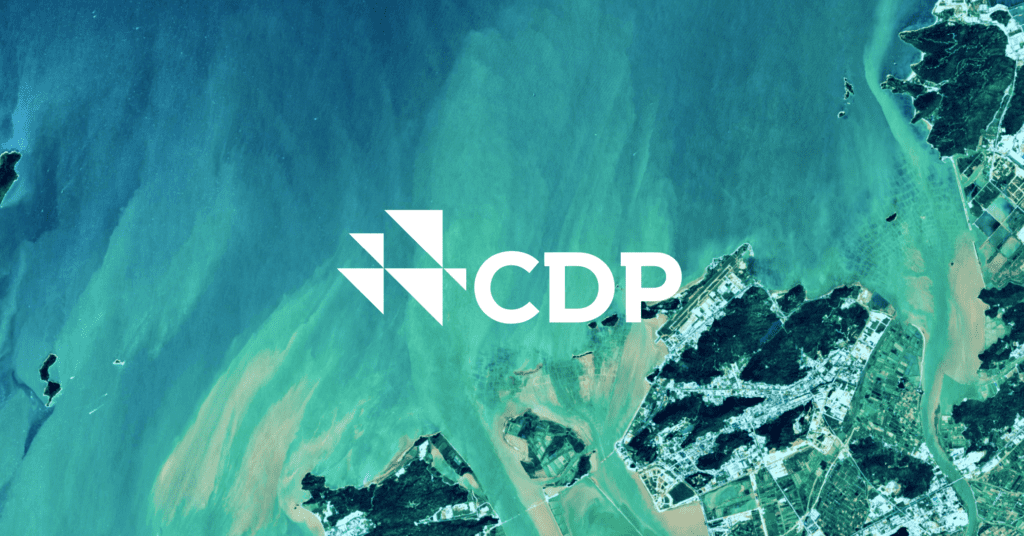6 practical ways to increase your CDP score
A group of investors who manage over $130 trillion in assets recently demanded companies to disclose environmental data to CDP. With such significant commercial opportunity at risk, finding ways to increase your CDP score is key. Let’s look at how you can do that.
CDP is an organisation that runs the international disclosure system for investors, companies, cities, states and regions to manage their environmental impacts.
They decide your score using three methodologies based on a questionnaire covering a specific environmental theme, with sector-related questions. You’re scored against four categories: Disclosure, Awareness, Management, and Leadership.
If you’re disclosing to CDP, and you’re not using external help, you need to familiarise yourself with the entire CDP scoring methodology for 2022. However, we recognise that for many this is a daunting task and have digested some of the most impactful ways to increase your CDP score below:
1. Don’t shy away from scope 3
Many companies avoid attempting to disclose their scope 3 emissions because they’re considered highly difficult to track. For reference:
- Scope 1: Emissions that a company owns or controls directly (burning fuel, etc.)
- Scope 2: Emissions that a company causes indirectly from the energy it purchases (electricity, etc.)
- Scope 3: Emissions that are not produced by the company itself, but by those up and down its value chain (material suppliers, etc.)
To disclose scope 3 correctly to CDP, you have to break them down by individual categories and have at least 70% of your data verified by a third-party. This is a complex task for most companies but this level of granularity can have a big impact on your CDP score.
2. Set science-based targets
Calculating your scopes 1, 2, and 3 emissions is one thing, proving that you’re doing something about them is another. If you set science-based carbon reduction targets and specify the global warming scenario they align with, you can increase your CDP score.
It’s recommended that you follow the Science-Based Targets initiative (SBTi) standard to align your reduction goals with a 1.5-degree pathway. As most of your emissions will likely sit in your supply chain, this proves that doing the groundwork in understanding your scope 3 emissions is critical to make the most impactful reductions.
Learn how to set science-based targets here.
3. Don’t lose “quick-win” points
Understanding the rules of the questionnaires will mean that you don’t lose “quick-win” points that erode your final score. For example:
- If you’re a first-time responder or your annual revenue is lower than EUR/US$250 million, you’re allowed to fill in a condensed version of the questionnaires, but if you choose to do this it will cap your score at A-;
- For some questions, you’ll be scored 0 if you don’t provide ALL key data points requested. This also applies when you leave answer boxes or table cells blank.
- Earning 0 points in some questions may prevent you from achieving any marks in a subsequent question, even if you answer it well.
While the quality of your data should be the priority, following the rules of the questionnaire is a foundational way to increase your CDP score.
4. Always provide detailed rationale
Although it’s important to answer every question to not miss out on quick-win points as mentioned above, the depth of your answer is critical too.
If you’re describing your methodologies, decisions, or actions, the CDP will reward you for providing a unique rationale that explains why you came to that outcome.
Even if you think a question is not relevant to your business, provide an answer that explains why you believe it’s not relevant. Don’t leave it blank or copy and paste a generic answer.
5. Case studies drive points
Wherever possible, including a case study in your answers can be one of the best ways to increase your CDP score. This helps prove that the rationale behind your decision-making has led to real-world results.
The CDP encourages applicants to format case studies using the STAR methodology, so make sure you keep this structure in mind to capitalise on the points given here:
- Situation — What was the situation you faced?
- Task — What tasks were you involved in?
- Action — What actions did you take?
- Results — What were the results of those actions?
6. Disclosing climate risk gets rewarded
Disclosing your climate-related financial risks reportedly has a big impact on your CDP score. If this is in line with a recognised regulatory body, even better.
Since April 2022, the Task Force on Climate-Related Financial Disclosure (TCFD) requirements have become mandatory for over 1,300 large companies in the UK. And more countries will likely follow. For example, according to the US Securities and Exchange Commission (SEC) proposal released last March, publicly listed American companies may soon face similar requirements.
In fact, the CDP scoring methodology for climate change is fully aligned with the TCFD and the questionnaire includes a dedicated module for ‘Risks and opportunities’.
Even if your country does not mandate climate-related risk disclosure, you can still increase your CDP score by aligning your risk analysis to organisations like the TCFD.
Other ways to increase your CDP score
Like we mentioned at the beginning of this article, you need to understand the entirety of the CDP methodology if you’re independently making an application. It’s also important to keep up to date with how the methodologies change year-to-year so that you don’t harm your score by using outdated best practice.
Alternatively, you can work with third-parties who are experts in this space, but that will depend on your organisation’s own needs and available resources.
If you’re interested in learning about the companies that CDP views as good examples of accelerating action towards a sustainable future, check out their annual Stories of Change report.
